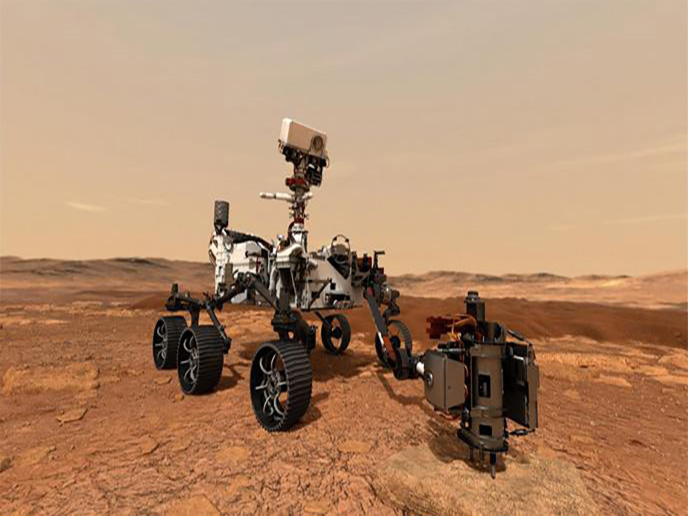Why is it so difficult to land on Mars?
On 18 February, as we watched the drama of Perseverance’s entry, descent and landing (EDL) unfold, little did we know that hundreds of crucial events needed to be executed flawlessly and precisely on time for the rover to land safely. Landing on Mars isn’t easy. About half of all previous attempts have failed. Many things can go wrong. One reason is that the Martian atmosphere’s features are difficult to predict until a spacecraft actually flies through.
One of the toughest things in space travel
What makes Perseverance’s achievement even more extraordinary is that it landed at the Jezero Crater, “the most challenging Martian terrain ever targeted for a landing,” noted Thomas Zurbuchen, associate administrator for the Science Mission Directorate at NASA Headquarters in Washington in a NASA news release. You can thank some of NASA’s new technologies for this. The American space agency has been getting ready for this moment for quite a while. “No Mars landing is guaranteed, but we have been preparing a decade to put this rover’s wheels down on the surface of Mars and get to work,” commented Jennifer Trosper, deputy project manager for the mission at NASA’s Jet Propulsion Laboratory (JPL) in the same release.
Seven nail-biting minutes
A video on JPL’s YouTube channel explains why the risky EDL is known as the “seven minutes of terror”. “It takes about seven minutes to get from the top of the atmosphere of Mars to the ground safely,” clarified Swati Mohan, Mars 2020 Guidance, Navigation & Control Operations Lead. “There are many things that have to go right to get Perseverance on to the ground safely.” All this while travelling nearly 20 000 km per hour. “To safely go from those speeds down to zero, in that short amount of time, while hitting a narrow target on the surface, requires ‘slamming on the brakes’ in a very careful, creative and challenging way,” explained NASA. “What’s more, Perseverance has to handle everything by itself. During the landing, it takes more than 11 minutes to get a radio signal back from Mars, so by the time the mission team hears that the spacecraft has entered the atmosphere, in reality, the rover is already on the ground. So, Perseverance is designed to complete the entire EDL process by itself – autonomously.” Timing is critical for this short and intense phase’s key milestones. Perseverance sheds its spacecraft part about 10 minutes before entering the atmosphere. Drag slows the rover down as it goes screaming towards the surface. Since it can be nudged off course because of small air pockets, it fires off small thrusters to stay on course. The heat shield slows the spacecraft down to 1 600 km per hour, which is when the supersonic parachute is deployed. Twenty seconds later, the heat shield separates and drops away, exposing the rover to the Martian atmosphere for the first time. To land safely, it abandons the parachute and makes the rest of the trip using rockets. The final descent speed is about 2.7 km per hour. Perseverance is lowered on a set of cables with about 12 seconds left to touchdown. The cables are cut when the wheels touch the ground. This elaborate 7-minute choreography was successful. Now let the real mission begin.
Keywords
Perseverance, rover, Mars, NASA, Jezero Crater, spacecraft, Jet Propulsion Laboratory



